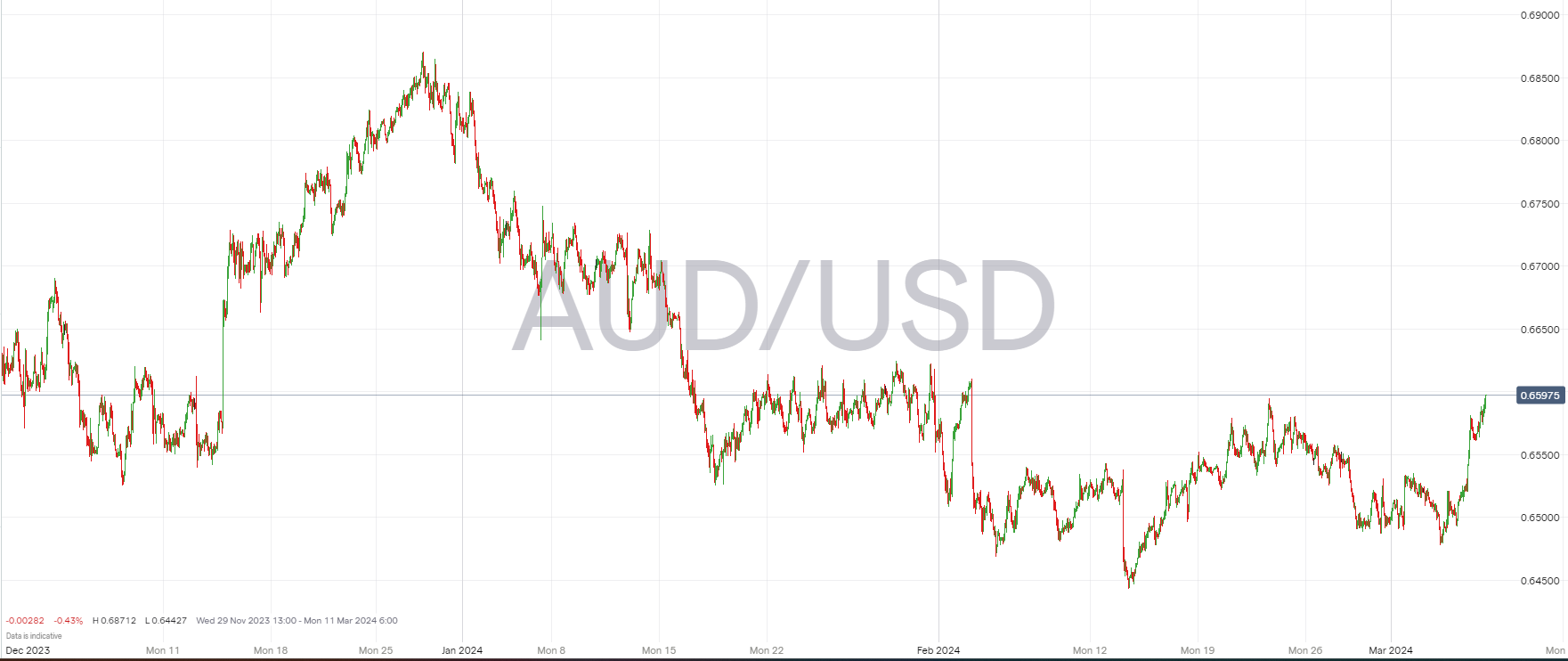Australia’s economy started the year on a strong note as trade figures for January 2024 indicated a bounce in the surplus to A$11.03 billion, up from a slightly revised figure of A$10.74 billion in the previous month. The driving force behind this surge came from a 1.6% month-over-month increase in exports which tallied up to A$47.51 billion – marking the highest level in ten months – largely buoyed by a significant uptick in non-monetary gold shipments.
In tandem, January also saw imports climb to a three-month peak, advancing 1.3% month-over-month to A$36.48 billion. Despite the rise in incoming goods, the pace of export growth ensured that the trade balance remained comfortably in the green. This trade surplus adds a robust layer to the Australian financial narrative that also included a GDP growth of 0.2% quarter-on-quarter in Q4 as anticipated.
Source: IG Markets
Top Australian Brokers
- Pepperstone - Trading education - Read our review
- IC Markets - Experienced and highly regulated - Read our review
- eToro - Social and copy trading platform - Read our review
Parallel to these developments, the services sector painted a positive picture with the Judo Bank Services PMI improving to 53.1 in February. However, this uplift in services was somewhat counterbalanced by a contraction in the manufacturing sector during the same period.
Investors tracking Australian market prospects through exchange-traded funds (ETFs) such as EWA, FXA, and FLAU would likely note these economic signals. Additionally, the currency rates also reel influence, with the USD/AUD exchange conversely impacting the value of Australian exports and investments. AUD is trading up on the day vs the USD at more than 0.45% at the time of writing.
In 2024, EWA, an ETF that tracks the performance of the Australian market, received a rating upgrade, signalling the perceived value in market opportunities down under. Such an upgrade could be a response to the robust trade figures and economic stability suggested by the recent metrics, including Australia’s trade surplus and services sector growth.
These financial indicators establish a multifaceted view of the Australian economy, offering a mix of promising growth within certain sectors, alongside the potential caution warranted by the manufacturing slowdown. Investors and traders alike would be prudent to keep a close eye on this mix of economic parameters, ranging from gold exports to service sector activity, as they shape the financial landscape of Australia moving into the second quarter of 2024.
Don’t Buy Just Yet
You will want to see this before you make any decisions.
Before you decide which shares to add to your portfolio you might want to take a look at this special report we recently published.
Our experts picked out The 5 best ASX shares to buy in 2024.
We’re giving away this valuable research for FREE.
Click below to secure your copy






